|
Books Should Be Free Loyal Books Free Public Domain Audiobooks & eBook Downloads |
|
|
Books Should Be Free Loyal Books Free Public Domain Audiobooks & eBook Downloads |
|
Tragedies |
|---|
|
Book type:
Sort by:
View by:
|
By: Henrik Ibsen (1828-1906) | |
|---|---|
 Rosmersholm
Rosmersholm
Rosmersholm is a play written in 1886 by Norwegian playwright Henrik Ibsen. In the estimation of many critics the piece is Ibsen’s masterwork, only equalled by The Wild Duck of 1884. As expressed by the protagonist, Rosmer, the theme of the play is social and political change, in which the traditional ruling classes relinquish their right to impose their ideals on the rest of society, but the action is entirely personal, resting on the conduct of the immoral, or amoral, “free thinking” heroine, Rebecca, who sets herself to undermine Rosmer’s religious and political beliefs because of his influential position in the community... | |
 When We Dead Awaken
When We Dead Awaken
When We Dead Awaken (1899) is the last play by Norwegian dramatist Henrik Ibsen. Dreamlike and highly symbolic, the play charts the dissolution of sculptor Arnold Rubek's marriage to Maia, her flirtation with Ulfheim, and his involvement with the mysterious Irene, his former model. The tensions rise between the characters as they climb higher and higher into the Norwegian mountains. | |
 Brand
Brand
Inflamed by what he saw as his Norwegian homeland's shocking betrayal of Denmark after the Prussian invasion of Danish territory, Ibsen wrote "Brand" as an indictment of human complacency and rigidity of mind. Composing this "dramatic poem" from his self-imposed exile in Italy, Ibsen had long agonized over the stodgy provincialism of his countrymen, but the abandonment of Denmark took on the dimensions in his imagination of a human tragedy far surpassing his own personal experiences. Brand is a priest who refuses to compromise, at the cost of great suffering to others, and who lives by unrealizable ideals... | |
 Hedda Gabler (version 2)
Hedda Gabler (version 2)
Hedda Gabler has just returned from her honeymoon. She has married out of ennui, and is already heartily sick of her husband, who is a plodding, pedantic academic. Upon moving into her new Christiania home, she soon discovers that Thea Elvsted, an old schoolmate whom she always envied and despised, has boldly left her marriage in order to be with Eilert Lövborg, a former lover of Hedda who is trying to overcome a past life of debauchery and alcoholism by creating a revolutionary new work of philosophy and returning to respectability... | |
 Master Builder (Gosse & Archer Translation)
Master Builder (Gosse & Archer Translation)
Halvard Solness is a master architect who has ruthlessly forged a preëminent career without regard for the feelings of those around him. In spite of this unscrupulous path of life, his conscience is still painfully alive, burdening him with guilt for past choices. He lives a tormented existence, fearful not only that he is going mad but also that he has unconsciously been in league with demonic powers in order to reach his present status. His long-suffering wife and his mistress try to deal with him in his fragile state while not being destroyed themselves... | |
By: Henry Fielding (1707-1754) | |
|---|---|
 Life and Death of Tom Thumb the Great
Life and Death of Tom Thumb the Great
Tom Thumb, small of stature, great of heart. This play was written as a parody of the tragic heroic biography of a great man, filled with biting satire as to people and events of the time. Note as warned by the title that this is not a happy-ending fairy tale. Supposedly Jane Austen put on a family performance of this play. - Summary by ToddHW Cast list: King Arthur, a passionate sort of king, husband to queen Dollallolla, of whom he stands a little in fear; father to Huncamunca, whom he is... | |
By: Homer | |
|---|---|
 The Iliad
The Iliad
A divinely beautiful woman who becomes the cause of a terrible war in which the gods themselves take sides. Valor and villainy, sacrifices and betrayals, triumphs and tragedies play their part in this three thousand year old saga. The Iliad throws us right into the thick of battle. It opens when the Trojan War has already been raging for nine long years. An uneasy truce has been declared between the Trojans and the Greeks (Achaeans as they're called in The Iliad.) In the Greek camp, Agamemnon the King of Mycenae and Achilles the proud and valiant warrior of Phthia are locked in a fierce contest to claim the spoils of war... | |
By: Jacques-Henri Bernardin de Saint-Pierre | |
|---|---|
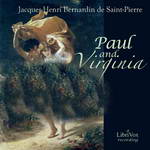 Paul and Virginia
Paul and Virginia
Paul and Virginia was first published in 1787. The novel's title characters are very good friends since birth who fall in love, but sadly die when the ship Le Saint-Geran is wrecked. The story is set in the island of Mauritius under French rule, then named Île de France, which the author had visited. Written on the eve of the French Revolution, the novel is hailed as Bernardin's finest work. It records the fate of a child of nature corrupted by the false, artificial sentimentality that prevailed at the time among the upper classes of France. | |
By: Jean Racine (1639-1699) | |
|---|---|
 Phaedra
Phaedra
In the court of Louis XIV, adaptations of Greek tragedies were very popular. This play, heavily influenced by Euripides' Hippolytus, deals with love that violates social taboos. Note: In Racine's work, a new "scene" begins whenever a character enters or exits. Therefore, there are no stage directions, only a list of the characters on stage for each scene. The action is continuous for the entire act. | |
 Thebaid, or The Brothers at War
Thebaid, or The Brothers at War
"The reign of Louis XIV. in France, like the age of Pericles at ancient Athens, was remarkable for literary excellence no less than for military achievements. Like Euripides, Racine confined himself almost exclusively to tragedy.... It was under Molière's friendly auspices that Racine's first published play, "La Thébaïde," was put upon the stage ... at the Palais Royale, Molière's own theater." The story, very much the opposite of a Moliere farce, describes the battle between the brothers Eteocles and Polynices, and being a proper tragedy does not end well for anyone... | |
 Andromache
Andromache
In this tragedy [about part of the aftermath of the Trojan War], which made its appearance in 1667, there is a more intricate plot than is usual in Racine's plays, and it offers a greater variety of character and motive. Love, jealousy, friendship, conjugal fidelity, maternal tenderness, anger, and despair are all portrayed with skillful touches; and if the language is that of the French Court of the seventeenth century, the natural emotions of the human heart, the same in all ages, show themselves... | |
 Britannicus
Britannicus
Britannicus is son and heir of the Roman emperor Claudius. However, this does not please Nero, who wants both throne and Britannicus's fiancee Junia. - Summary by ToddHW Cast list: Nero, emperor, son of Agrippina: Dale Burgess Britannicus, son of Messalina and of the emperor Claudius: David Purdy Agrippina, widow of Domitus Ahenbarbus, the Father of Nero, and widow by her second marriage of the emperor Claudius: Matea Bracic Junia, beloved by Britannicus: thestorygirl Burrus, tutor of Nero: ToddHW Narcissus, tutor of Britannicus: Alan Mapstone Albina, confidential friend of Agrippina: Sonia Stage Directions: Larry Wilson Editing: ToddHW | |
 Berenice
Berenice
Titus, emperor of Rome, wants to marry Berenice, queen of Palestine, but decides that Rome will not be able to handle having him marry a foreign queen. Berenice refuses to stay in this case and leaves Rome. Unlike many of the other Racine plays, there actually are survivors at the end of this one! - Summary by ToddHW Cast list: Titus, emperor of Rome: Adrian Stephens Berenice, queen of Palestine: WendyKatzHiller Antiochus, king of Commagene: ToddHW Paulinus, a friend of Titus: Tchaikovsky Arsaces, a friend of Antiochus: Alan Mapstone Phoenice, a friend of Berenice: Jenn Broda Rutilus, a Roman: Larry Wilson Stage Directions: Sonia Editing: ToddHW | |
 Bajazet
Bajazet
"The time to which this tragedy relates is much later than that of any other of Racine's historical plays. The capture of Babylon from the Persians by Sultan Amurath IV, on which the catastrophe of the plot depends, occurred only a year before the poet's birth, viz 1638." - Summary by the Translator Cast list: Bajazet, Brother of Sultan Amurath: VocalPenguin Roxana, Sultana, the favorite of Sultan Amurath: Matea Bracic Atalide, a Turkish Damsel of Royal Blood: Availle Achmet, the Grand Vizier: ToddHW Osman, Friend of the Grand Vizier: Alan Mapstone Fatima, a Slave of the Sultana: Jenn Broda Zara, a Slave of Atalide: Sonia Stage Directions: Larry Wilson Editing: ToddHW | |
 Mithridates
Mithridates
Another tragedy by Racine, based on the historical character and career of Mithridates circa 63 BCE. Closing with sorrow and lamentation and promises of a "search for vengeance". - Summary by ToddHW Cast list: Mithridates, King of Pontus and of many other lands: Greg Giordano Monima, betrothed to Mithridates, and already declared Queen: Sonia Pharnaces, son of Mithridates: Jenn Broda Xiphares, son of Mithridates: Tchaikovsky Arbates, friend of Mithridates, and Governor of Nymphaeum: ToddHW Phoedima, Friend of Monima: WendyKatzHiller Arcas, Servant of Mithridates: Joanna Michal Hoyt Stage Directions: Alan Mapstone Editing: ToddHW | |
 Iphigenia
Iphigenia
Racine's version of the time-honored story of Iphigenia was acted for the first time in 1674. The model upon which it is shaped is the "Iphigenia in Aulis" of his favorite Euripides, but the French poet has heightened the romantic interest and complicated the plot by the important part which Eriphyle is made to play. - Summary by Introduction Cast list: Agamemnon: Greg Giordano Achilles: Alan Mapstone Ulysses: ToddHW Clytaemnestra, Wife of Agamemnon: Sonia Iphigenia, Daughter of Agamemnon:... | |
By: Joanna Baillie (1762-1851) | |
|---|---|
 Orra
Orra
Considered by her contemporaries a playwright “second only to Shakespeare,” Joanna Baillie was one of the most critically acclaimed writers of the Romantic Era. The Plays on the Passions, first published in 1798, stands as her undeniable magnum opus: a multivolume series of tragedies and comedies exploring the overruling passions of the mind. Orra: A Tragedy in Five Acts, which comes from that series' third volume, is Joanna Baillie’s haunting meditation on fear and madness. It is gothic melodrama par excellence... | |
 Dream
Dream
The Dream is Joanna Baillie’s gothic, proto-Lynchian meditation on fear, guilt, and the prophetic power of dreams. In the cloistered confines of a Swiss monastery, a small group of monks share the same prophetic dream: a forlorn specter reaches out to them with a mysterious—and potentially life-threatening—ultimatum. The dream comes every night, and yet its true import remains hazy and unknown. But when these dreams lead them to a buried corpse, the monastery soon tumbles down a blood-spattered path of vengeance, betrayal, and unbridled terror... | |
By: Johann Wolfgang von Goethe (1749-1832) | |
|---|---|
 The Sorrows of Young Werther
The Sorrows of Young Werther
The Sorrows of Young Werther (German, Die Leiden des jungen Werther, originally published as Die Leiden des jungen Werthers) is an epistolary and loosely autobiographical novel by Johann Wolfgang von Goethe, first published in 1774. The story follows the life and sorrows of Werther after he falls desperately in love with a young woman who is married to another. A climactic scene prominently features Goethe's own German translation of a portion of James Macpherson's Ossian cycle of poems, which had originally been presented as translations of ancient works, and was later found to have been written by Macpherson. (Introduction by Wikipedia and Barry Eads) | |
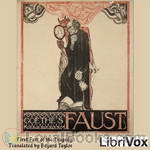 Faust, Part 1
Faust, Part 1
Faust is the protagonist of a classic German legend; a highly successful scholar, but also dissatisfied with his life, and so makes a deal with the devil, exchanging his soul for unlimited knowledge and worldly pleasures.Johann Wolfgang von Goethe's Faust is a tragic play in two parts. It is Goethe's most famous work and considered by many to be one of the greatest works of German literature.This first part of Faust is not divided into acts, but is structured as a sequence of scenes in a variety of settings. After a dedicatory poem and a prelude in the theatre, the actual plot begins with a prologue in Heaven and Scene 1 in Faust's study. | |
By: Johanna Brandt (1876-1964) | |
|---|---|
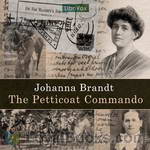 The Petticoat Commando
The Petticoat Commando
In introducing the English version of this book I venture to bespeak a welcome for it, not only for the light which it throws on some little-known incidents of the South African war, but also because of the keen personal interest of the events recorded. It is more than a history. It is a dramatic picture of the hopes and fears, the devotion and bitterness with which some patriotic women in Pretoria watched and, as far as they could, took part in the war which was slowly drawing to its conclusion on the veld outside... | |
By: John Galsworthy (1867-1933) | |
|---|---|
 Skin Game
Skin Game
A small play in three acts. A kind of comic tragedy. The plot tells the story of the interaction between two very different families in rural England just after the end of the First World War. Squire Hillcrist lives in the manor house where his family has lived for generations. He has a daughter, Jill, who is in her late teens; and a wife, Amy, as well as servants and retainers. He is "old money", although his finances are at a bit of low ebb. The other family is the "nouveau riche" Hornblowers,... | |
By: John Milton (1608-1674) | |
|---|---|
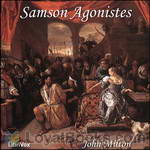 Samson Agonistes
Samson Agonistes
“The Sun to me is darkAnd silent as the Moon,When she deserts the nightHid in her vacant interlunar cave.”Milton composes his last extended work as a tragedy according to the classical Unities of Time, Place and Action. Nevertheless it “never was intended for the stage” and is here declaimed by a single reader.Samson the blinded captive, in company with the Chorus of friends and countrymen, receives his visitors on their varying missions and through them his violent story is vividly recalled... | |
By: John Webster (c.1580 - c.1634) | |
|---|---|
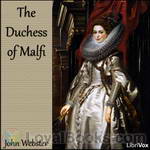 The Duchess of Malfi
The Duchess of Malfi
John Webster's bloody Jacobean tragedy exposes the decadence of the Italian court. The virtuous Duchess of Malfi, a young widow, secretly marries her steward Antonio, and is subsequently persecuted by her brothers: the sexually obsessed and eventually mad Ferdinand, and the corrupt Cardinal. | |
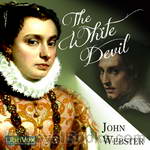 The White Devil
The White Devil
John Webster's The White Devil (1612) is a Jacobean revenge tragedy, replete with adultery, murder, ghosts, and violence. The Duke of Brachiano and Vittoria Corombona decide to kill their spouses, Isabella and Camillo, in order to be together, aided by the crafty and ambitious Flamineo, Vittoria's brother. Their actions prompt vows of revenge from Isabella's brother Francisco, the Duke of Florence, and Count Lodovico, who was secretly in love with her. The title refers to the early modern proverb that "the white devil is worse than the black," indicating the hypocrisy practiced by many of the characters in the play. | |
By: Joseph Comyns Carr (1849-1916) | |
|---|---|
 King Arthur
King Arthur
A retelling of the classic legend of King Arthur, Guinevere & Sir Lancelot. | |
By: Joseph Conrad (1857-1924) | |
|---|---|
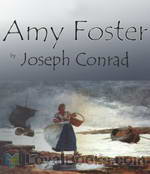 Amy Foster
Amy Foster
Classic shortish story by Conrad that relates his self-thought alienation from British society, as a young foreign man survives a shipwreck off the coast of Kent, England only to be shunned by most of the townsfolk. The one exception is the loving, if dull-witted, Miss Foster. | |
By: Lagerlöf, Selma (1858-1940) | |
|---|---|
 The Treasure
The Treasure
Selma Lagerlöf was born in Vaermland, Sweden, in 1858 and enjoyed a long and very successful career as a writer, receiving the Nobel-Prize in Literature in 1909. She died in Vaermland in 1940. The Treasure (Herr Arnes penningar) is a fairly short Novel, both a Drama and a Ghost Story. Published in 1904 and the English translation in 1923. The story is set in Bohuslaen on the West coast of Sweden in the middle of the 16th Century. Herr Arne, the old Parson in Solberga and all his household are brutally murdered, and his great Treasure stolen... | |
By: Leo Tolstoy (1828-1910) | |
|---|---|
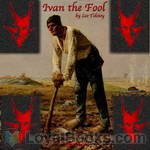 Ivan the Fool
Ivan the Fool
Written after Tolstoy suffered a spiritual crisis, Ivan the Fool is a fairy tale that offers children instruction in how to live rightly, simply, and generously. The story emphasizes the destructive aspects of materialism and militarism while idealizing manual labor and the peasant life. (Introduction by Dorlene Kaplan) | |
By: Lord George Gordon Byron (1788-1824) | |
|---|---|
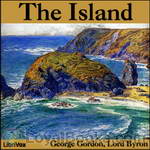 The Island
The Island
Written late in his career, Byron's narrative poem The Island tells the famous story of the mutiny on board the Bounty, and follows the mutineers as they flee to a South Sea island, "their guilt-won Paradise." | |
By: Louis Ulbach (1822-1889) | |
|---|---|
 The Steel Hammer
The Steel Hammer
A large inheritance greatly transforms the lives of three people: a good man, who would have inherited at least a part of the fortune if his uncle hadn't passed away before he could alter the will, his cousin, who inherits all but is prevented from enjoying it, and a gambler, who is in desperate need of such a sum of money. The connection of the three ends fatal for at least one of them. | |
 For Fifteen Years
For Fifteen Years
For Fifteen Years by Louis Ulbach is the sequel to The Steel Hammer which tells the story of a poor upholsterer, Jean Mortier who is falsely accused of murder and the tragic chain of events that follow. For Fifteen Years begins in the aftermath of the conviction when the destitute wife and daughter of Jean Mortier are taken in by the family of a character witness from the trial, Gaston de Monterey. Circumstances and deceptions lead to distrust and tension among the two families for fifteen years but the daughter of Jean Mortier and the son of Gaston de Monterey have fallen in love... | |
By: Ludovico Ariosto (1474-1533) | |
|---|---|
 Orlando Furioso
Orlando Furioso
Charlemagne's nephew Orlando (AKA Roland) is driven insane by the infidelity of his beloved Angelica. Angelica's relationship with him and others loosely unifies multiple story lines to produce a rich tapestry of romance, fictionalized history, and pure fantasy. This romance-epic is a sequel to the less distinguished and unfinished romance Orlando Innamorato, by Mattteo Maria Boiardo. | |
By: Mary Wollstonecraft Shelley (1797-1851) | |
|---|---|
 Mathilda
Mathilda
The finished draft of a short novel by Mary Shelley. Its adult theme, concerning a father’s incestuous love for his daughter and its consequences, meant that the manuscript was suppressed by Shelley’s own father, and not published until 1959, more than a hundred years after her death. Summary by Cori Samuel | |
By: Matthew Lewis (1775-1818) | |
|---|---|
 Adelgitha; or, The Fruits of a Single Error
Adelgitha; or, The Fruits of a Single Error
The second original tragedy written by Gothic writer Matthew Lewis, Adelgitha; or, The Fruits of a Single Error is a markedly more serious affair than his melodramatic output, dealing as it does with a fallen woman who is mercilessly blackmailed by a ruthless tyrant when she spurns his advances. Set in Otranto during the High Middle Ages, and featuring fictionalized depictions of historical rulers Robert Guiscard and Michael Ducas , Adelgitha is an archetypal Gothic drama that, while not especially refined or meritorious in terms of quality, still manages to thrill in that deliciously overwrought way that Lewis knew how to sell... | |
By: Morgan Robertson | |
|---|---|
 Futility, Or the Wreck of the Titan
Futility, Or the Wreck of the Titan
This novel was published a full 14 years before the sinking of the Titanic, but listeners may be surprised at how many parallels this fictional tale has with subsequent true events. The Titan is the largest and most technologically advanced steamship of her time. She is considered unsinkable. Her full speed crossings of the Northern Lane Route carry her rich passengers in the highest standards of luxury and comfort. The less well-off travel in rougher quarters but still benefit from the speed of travel... | |
By: Oscar Wilde (1854-1900) | |
|---|---|
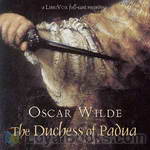 The Duchess of Padua
The Duchess of Padua
Guido Ferranti, a young man, travels to Padua with his friend Ascanio after receiving a mysterious letter from a stranger, claiming to know the true secret of Guido's birth. His plan of revenge goes awry, however, when he falls in love with his enemy's beautiful wife, the Duchess of Padua. | |
By: Ouida (1839-1908) | |
|---|---|
 A Dog of Flanders
A Dog of Flanders
"Nello and Patrasche were left all alone in the world." So begins the poignant story of the two orphans who were to become inseparable companions. They were Nello, an orphaned youth, and Patrasche, the dog which he and his grandfather saved from near death one day. The tale takes place outside of Antwerp, and so popular has this story become that there is a commemorative statue of Nello and Patrasche standing in the village yet today. The story is powerful, and masterfully written by Marie Louise de la Ramée under the pseudonym Ouida. | |
By: Percy Bysshe Shelley (1792-1822) | |
|---|---|
 Zastrozzi, A Romance
Zastrozzi, A Romance
“Would Julia of Strobazzo’s heart was reeking on my dagger!”From the asthmatic urgency of its opening abduction scene to the Satanic defiance of the villain’s departure “with a wild convulsive laugh of exulting revenge”, this first of Shelley’s Gothic novelettes recycles much sensational boyhood reading and also points to some of his more mature concerns.It is the ego-driven pursuit of passionate extremes, revenge included, which consigns figures like Zastrozzi and the murderous Matilda to an isolation which is socially destructive as well as self-annihilating... | |
 Cenci
Cenci
Written in 1819, but not first staged for over hundred years after it was written due to controversial themes of incest and parricide, it was not considered stageable. This tragedy is a true story, set in Rome, 1599, centred around the murder of the tyrant, Count Francesco Cenci, by his tormented daughter, Beatrice. - Summary by Jake Malizia Cast list: Count Francesco Cenci Greg Giordano Lucretia, wife of Cenci and step-mother of his children Sonia Beatrice, daughter of Cenci Jenn Broda Orsino,... | |
By: Rita (E. M. Gollan) (1850-1938) | |
|---|---|
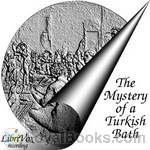 The Mystery of a Turkish Bath
The Mystery of a Turkish Bath
A group of guests, at an exclusive luxury hotel in Hampshire, are the witnesses of an illustration of occult powers, demonstrated by “the Mystery”, as Mrs. Jefferson named the beautiful stranger who one day appeared in the Turkish Baths of the hotel. The events that follow lead Mrs. Jefferson to question the wisdom of her interest in the occult. | |
By: Romain Rolland (1866-1944) | |
|---|---|
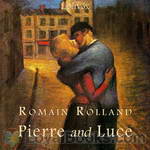 Pierre and Luce
Pierre and Luce
Pierre and Luce were an unlikely young pair who found themselves in the chaos of Paris during the war; Pierre, the shy, recently conscripted pacifist, and Luce, the free spirited artist in training, and both confused about the things going on around them. Why were these war birds flying overhead? Why these warning sirens, and occasional bombs exploding in the distance? Why did the government leaders, who didn't even know one another, hate and destroy so much? Why did these two delicate young adults find each other now? This story takes place between January 30 and Good Friday, May 29, 1918. (Introduction by Roger Melin) | |
By: Sophocles (495-406 BC) | |
|---|---|
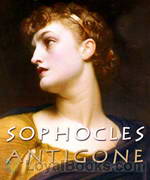 Antigone
Antigone
This is the final installment in Sophocles's Theban Plays, following Oedipus Rex and Oedipus at Colonus. Oedipus's daughter Antigone deliberately breaks the laws of Thebes when she buries her brother's body and is sentenced to death. She clashes with Creon, the King of Thebes, over what constitutes justice and morality: the laws of the state or the laws of the individual. | |
 Electra
Electra
Sophocles' play dramatizes the aftermath of Agamemnon's murder by his wife Clytemnestra and her lover Aegisthus. His daughter Electra is hungry for revenge and longs for the return of her brother Orestes to help her achieve her ends. | |
By: Susanna Centlivre (1680-1723) | |
|---|---|
 Perjur'd Husband, or The Adventures of Venice
Perjur'd Husband, or The Adventures of Venice
Centlivre's first play: a tragedy. Star-crossed lovers, one married and the other betrothed elsewhere. Secret letters gone astray, gender changing disguises, climax at masked ball. - Summary by ToddHW Cast list: Count Bassino, a Savoyard, married to Placentia, and in Love with Aurelia: Mike Manolakes Armando, Bassino's Friend: Alan Mapstone Alonzo, a Venetian Gentleman, betrothed to Aurelia: Wayne Cooke Pizalto, a Noble Venetian: Greg Giordano Ludovico, a Frenchman: Rémi Placentia, Bassino's Wife:... | |
By: Thomas Dekker | |
|---|---|
 Witch of Edmonton
Witch of Edmonton
Mother Elizabeth Sawyer is a poor, lonely, and unfairly ostracized old woman with nothing left to lose. Frank is a poor farmer who intends to marry his beloved Winnifred, who is pregnant with his child, but is pressured to marry Susan, the rich yeoman's daughter. Young Cuddy Banks is a clown who pines after a girl who doesn't love him. When Mother Sawyer turns to witchcraft after being unjustly accused of it, a talking devil-dog named Tom comes to her aid, becoming her familiar and only friend. Though she intends to get her revenge, little does she know many of those around her are only too willing to sell their souls to the devil all by themselves... | |
By: Thomas Middleton (1580-1627) | |
|---|---|
 Women Beware Women
Women Beware Women
Thomas Middleton's masterful 17th century tragedy is packed with adultery, incest, intrigue, revenge, and inventive methods for murder. Leantio elopes with Bianca against her family's wishes and tries to hide her in the house he shares with his widowed mother. Yet the Duke sees Bianca at the window and is powerfully attracted to her, threatening Leantio's security. Livia, a wealthy widow, delights in intrigue, aiding the Duke to satisfy his desires with Bianca, and bringing together her brother Hippolito with her niece Isabella, despite their familial relationship... | |
 Yorkshire Tragedy
Yorkshire Tragedy
A Yorkshire Tragedy: Not So New as Lamentable and True (1619) tells the gruesome tale of Walter Calverly who stabbed his wife and killed his two young sons in April 1605. This recording is based on the text of the second quarto, which was attributed to William Shakespeare on its title page. This transcription is based on the 1619 quarto at the Boston Public Library. Students completed the transcription in the fall of 2013 for English 422 (Seminar on | |
 Revenger's Tragedy
Revenger's Tragedy
"When the bad bleeds, then is the tragedy good." The Revenger's Tragedy is a bloody Jacobean drama centering on Vindici, whose beloved has been murdered by the Duke. Aided by his brother Hippolito, Vindici plans to take revenge not only on the Duke, but on his lecherous Duchess (who is having an affair with her stepson, Spurio) and his sons Lussurioso (Lust), Ambitioso (Ambition), and Supervacuo (Excess). The play was published anonymously in 1606 and for several centuries was attributed to Cyril Tourneur; more recent scholarship has pointed to Thomas Middleton as the likely author... | |
By: Thomas Noon Talfourd (1784-1854) | |
|---|---|
 Ion
Ion
This drama, set in Ancient Greece, was written by a Victorian lawyer who was a close friend of Charles Dickens. When collected into book format, “The Pickwick Papers” was dedicated to him. As a Member of Parliament, Sir Thomas Noon Talfourd introduced legislation protecting the copyrights of authors. This play was originally printed only to be read as poetry. However, it attracted the attention of William Macready, who mounted a successful production of it at Covent Garden in 1836. The drama became a much bigger hit a few years later, though, when it was revived with actress Ellen Terry taking over the part of the tragic hero, Ion... | |
By: Thomas Southerne (1660-1746) | |
|---|---|
 Oroonoko
Oroonoko
Based on Aphra Behn's 1688 novel , Thomas Southerne's Oroonoko is seen by scholars today as the driving force that kept Behn's work from fading into obscurity. During the eighteenth and nineteenth centuries, it was considered even more popular than the novel, presenting theatergoing audiences with a highly touching tale of pathos and tragedy involving the eponymous prince-turned-slave and his undying devotion to his beloved wife, Imoinda. However, in this version, unlike in Behn's novel, Imoinda is a white woman, and there is also a comic subplot involving the husband-hunting Welldon sisters that caters to Restoration tastes ... | |
By: Unknown | |
|---|---|
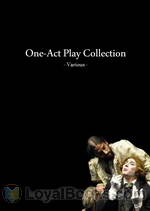 One-Act Play Collection
One-Act Play Collection
One-Act Play Collection includes 6 one-act plays in the public domain. | |
By: Victor Hugo (1802-1885) | |
|---|---|
 Marion de Lorme
Marion de Lorme
Marion de Lorme is a play about a famous French courtesan with the same name, known for her relationships with the important men of her time. Cast list: Marion de Lorme: Kristin Gjerløw Didier: KHand Louis XIII: Ted Delorme Marquis de Nangis: ToddHW Marquis de Saverny: Beth Thomas L'Angely: John Burlinson M. de Laffemas: davidpr Duke de Bellegarde: AnttiV Marquis de Brichanteau: Joseph Tabler Count de Gassé: Peter Tucker Viscount de Bouchavannes: Jennifer Fournier Chevalier de Rochebaron: ToddHW Count... | |
By: W. S. Gilbert (1836-1911) | |
|---|---|
 Gretchen
Gretchen
About as far from a rollicking Gilbert and Sullivan musical as you can get: this is Gilbert's tragic version of Goethe's Faust. - Summary by ToddHW Cast list: Dominic: David Purdy Anselm: Alan Mapstone Faustus: Mike Manolakes Gottfried: Kurt Mephisto: ToddHW Agatha: Diane Castillo Bessie: Kathi M. Walsheck Barbara: TJ Burns Lisa: Kelly S. Taylor Gretchen: Jenn Broda Martha: Sonia Friedrich: David Purdy Stage Directions: Adrian Stephens Editing: ToddHW | |
By: Wilkie Collins (1824-1889) | |
|---|---|
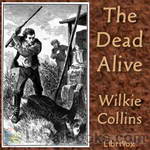 The Dead Alive
The Dead Alive
Ill feelings exist between the Meadowcroft sons and John Jago, the foreman of the Meadowcroft estate. Then, John Jago disappears, and a body is found in a kiln. The Meadowcroft brothers stand accused of the crime, but are they guilty? The Dead Alive is a novel written by Wilkie Collins based on the true-life Boorn Brothers murder conviction case of 1819. Jesse and Stephen Boorn were sentenced to death for the murder of their brother-in-law, but were they wrongly convicted? | |
By: William Rowley (1585-1626) | |
|---|---|
 Changeling
Changeling
The Changeling is a sensational 1622 tragicomedy by Thomas Middleton and William Rowley that comprises two intertwining plots. The first involves Beatrice-Joanna, daughter of the governor of Alicante, and her unruly passion for Alsemero, despite the fact that she is engaged to Alonzo de Piracquo. She enlists the aid of her father's servant De Flores to kill Alonzo so that she can marry Alsemero. However, she does not anticipate that De Flores, who is in love with her, will demand payment for the deed... | |
By: William Shakespeare (1564-1616) | |
|---|---|
 Romeo and Juliet
Romeo and Juliet
William Shakespeare’s most well-known play is more than most people realize. While it is the story of star-crossed lovers, Romeo and Juliet, it is also the story of two families in the middle of a bitter feud. Many people avoid the story because they believe it will be too difficult to read, but this is not true at all. Within a few paragraphs, the play captures your imagination and attention. Juliet is 13 years old and is love with the son of her father’s enemy. Her father has promised that she will marry another boy when it is time, but she refuses to accept the suit... | |
 King Lear
King Lear
Considered to be one of Shakespeare's greatest plays, the tragedy King Lear portrays some of the darkest aspects of human nature that can be found in literature. The helplessness of the human condition, as we fall prey to our destinies, the injustice and random cruelties practiced by people, suffering and humiliation, the lust for power and the greed for wealth are all depicted in this magnificent play. And through it all, runs the golden thread of love and sacrifice, daughterly affection and the true nature of our relationship with our parents... | |
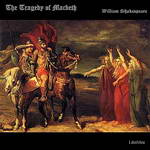 The Tragedy of Macbeth
The Tragedy of Macbeth
Right from its famous opening scene which begins, “Thunder and lightning. Enter Three Witches” The Tragedy of Macbeth by William Shakespeare holds the reader fast in a stirring, monumental experience that plumbs the depths of the human soul and reveals its most morbid secrets. The play is set in medieval Scotland. It is based partly on historical facts and recounts the tale of Macbeth, who was a king in Scotland, according to The Holinshead Chronicles, a book published in 1577. This book was extensively used by contemporary playwrights like Shakespeare and Marlowe as inspiration for their themes, characters and events... | |
 Othello
Othello
In seventeenth century Venice, a wealthy and debauched man discovers that the woman he is infatuated with is secretly married to a Moorish general in the Venetian army. He shares his grief and rage with a lowly ensign in the army who also has reason to hate the general for promoting a younger man above him. The villainous ensign now plots to destroy the noble general in a diabolical scheme of jealousy, paranoia and murder, set against the backdrop of the bloody Turkish-Venetian wars. This timeless tale, Othello The Moor of Venice was one of the ten famous tragedies that William Shakespeare wrote... | |